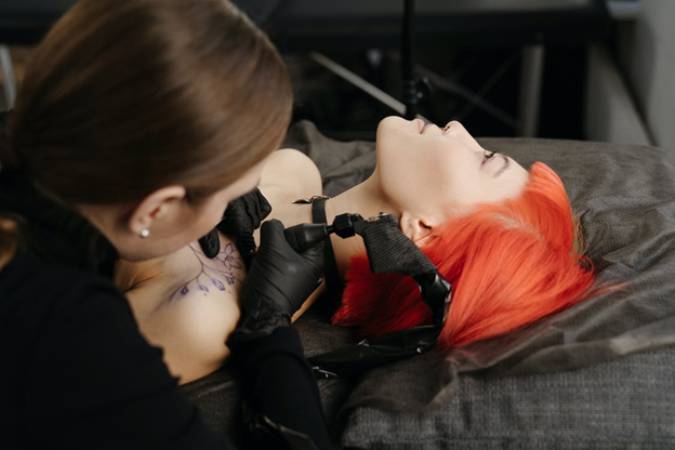Pain Relief for Tattoos: Despite advancements in tattooing technology, pain is still very much part of the tattooing process. This can be off-putting, especially for those who love the idea of getting inked, but may be concerned about the pain involved. Fortunately, there are a number of ways to help minimize discomfort.
Table of Contents
Why Do Tattoos Hurt?
Pain from getting a tattoo is variously described as burning, scratching, stinging, vibrating or even dull pain. Aside from the process itself, there are a number of factors that can affect a person’s experience of pain, including:
- Personal tolerance levels
- Previous experience of being tattooed
- Biological sex
- Genetic and psychosocial factors
Another key factor for tattoo pain is placement. Some areas of the body (such as the ribcage, groin and neck) have thinner skin, less fat and more nerve endings than other areas, which equates to higher pain levels. Less painful areas include fleshier areas such as the outer thighs and biceps.
Preparing for your Tattoo Consultation
In some unfortunate cases, pain may be due to infection caused by unsanitary equipment or conditions on the premises. Before making your appointment, shop around for a licensed tattoo parlor with good hygiene ratings and solid reviews.
Ask for a pre-tattoo consultation (this may involve a fee, so ask beforehand), and don’t be afraid to ask about things like potential allergens, qualifications and sanitization methods in addition to rates and pain relief options.
A good tattoo artist should be able to confidently give you this information with evidence to back it up. If you don’t feel comfortable with them, it’s perfectly acceptable to take your business elsewhere. Rather than having regret in the future and considering removal and the additional cost of removing a tattoo.
Tips for Reducing Pain
Some advice for tattoo pain management, before, after and on the day:
- Watch what you eat and drink. Avoid alcohol, as it’s a blood thinner and may cause bruising and even additional pain during the process. Instead, stay hydrated (tattooing on dry skin can increase pain) and eat well: low blood sugar can also increase sensitivity.
- Stress has a direct impact on pain, so get proper sleep and take time to learn some self-soothing techniques to calm you (music can be a good distraction).
- If the pain you are experiencing during the tattooing process becomes too intense, ask your tattoo artist for a break. It’s not uncommon for larger pieces to be worked on over a number of sessions.
- Wear loose clothing over the area to be tattooed to avoid any uncomfortable friction afterwards.
Pain Relief Options
Certain pain relief medications such as ibuprofen and aspirin are blood thinners, so avoid these in the 24 hours prior to getting your tattoo. As an alternative, some tattoo artists may suggest using a topical numbing cream.
These typically contain lidocaine, a local anaesthetic designed to block pain signals at the nerve endings in the skin. Some people may have a contact allergy to them, so if you are unfamiliar with the product do a small patch test 24 hours in advance to see whether it is safe for you to use and always follow manufacturer instructions.
If you’re looking for an effective numbing cream to help ease tattoo pain, Numbed Ink’s Signature Numbing Cream can help numb the tattoo area for up to five hours.

